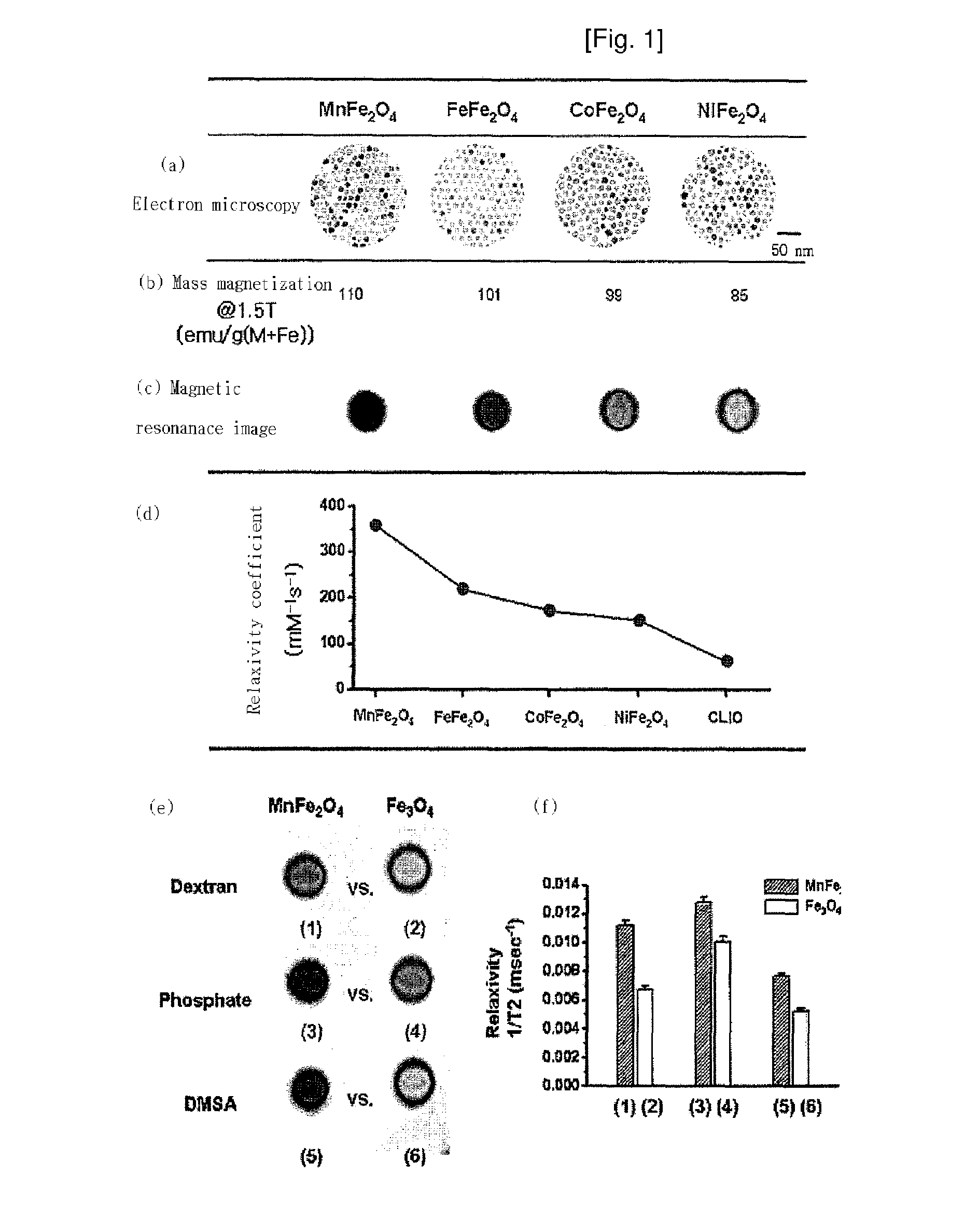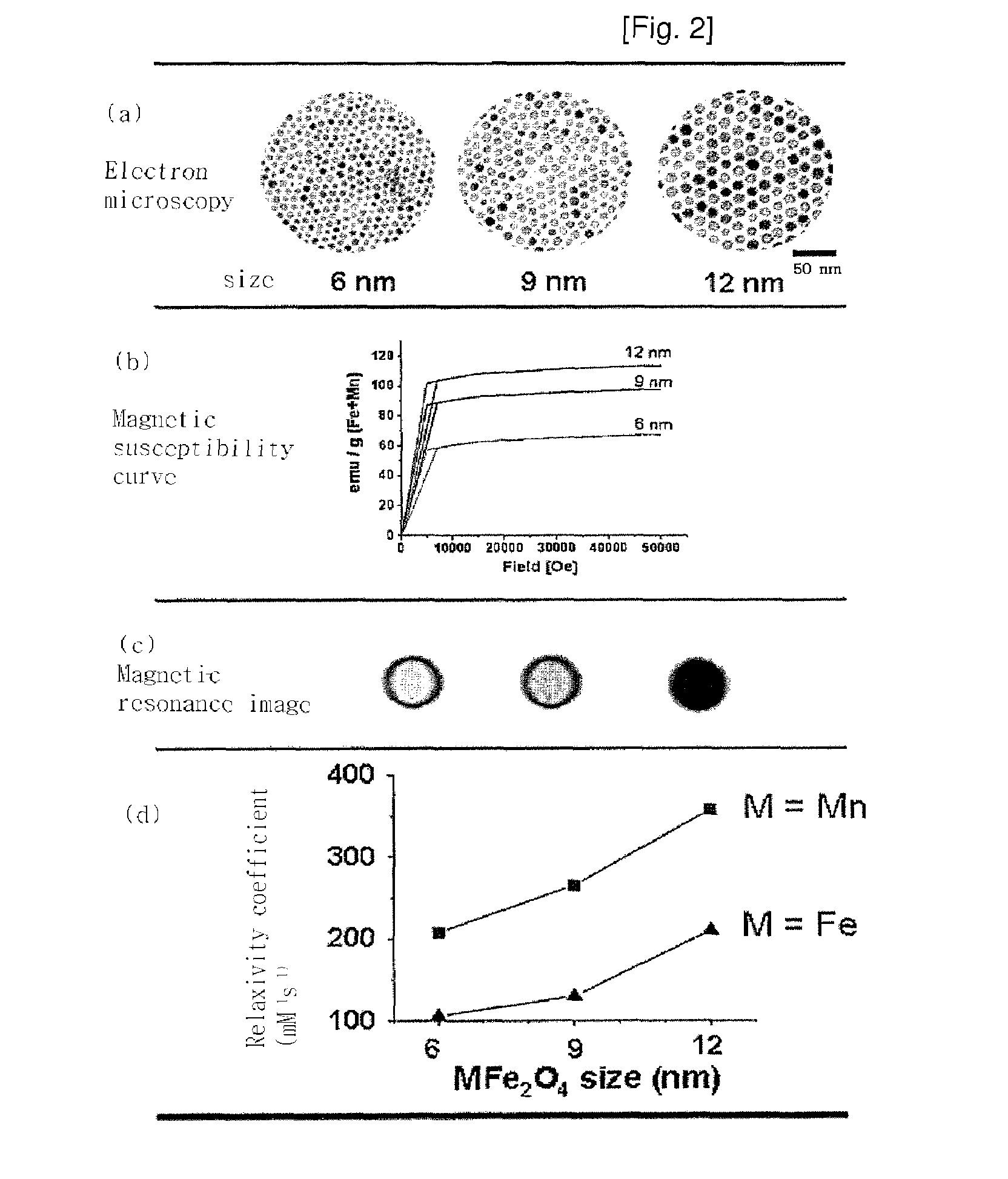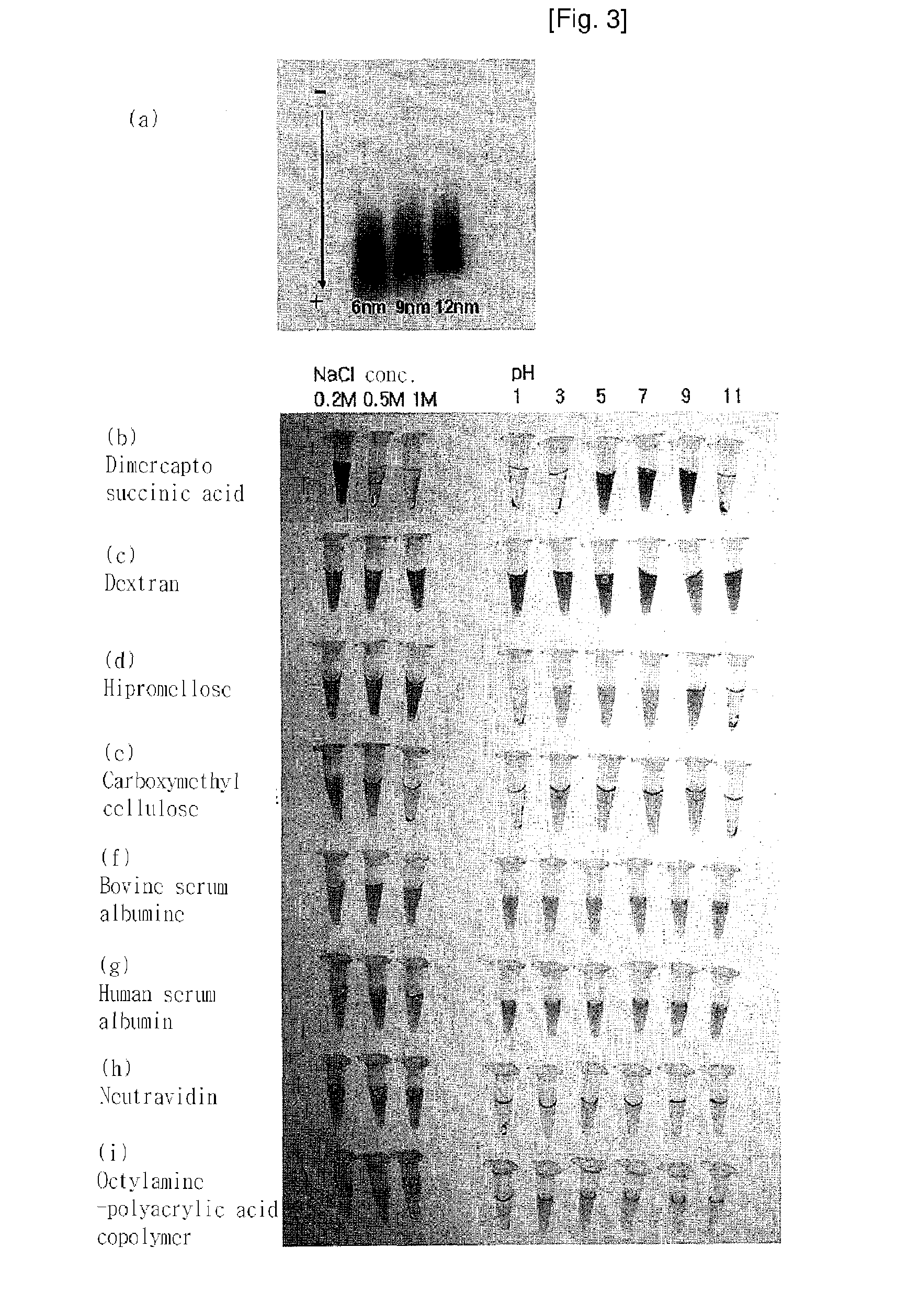Magnetic resonance imaging contrast agents containing water-soluble nanoparticles of manganese oxide or manganese metal oxide
a technology of magnetic resonance imaging and water-soluble nanoparticles, which is applied in the field of manganesecontaining metal oxide nanoparticle-based magnetic resonance imaging contrast agents, can solve the problems of reduced signal enhancement, low diagnostic sensitivity, and magnetic resonance imaging, and achieve excellent magnetic properties, uniform size, and increase the effect of magnetic properties
- Summary
- Abstract
- Description
- Claims
- Application Information
AI Technical Summary
Benefits of technology
Problems solved by technology
Method used
Image
Examples
example 1
Comparison Between MRI Contrast Effects of Manganese Ferrite (MnFe2O4) Nanoparticles and those of Iron Oxide Nanoparticles, Cobalt Ferrite Nanoparticles, and Nickel Ferrite Nanoparticles
[0070]To confirm whether manganese ferrite nanoparticles (12 nm) as developed herein have an MRI contrast effect better than the conventional iron oxide nanoparticles and other metal ferrite nanoparticles, mass magnetization values, MR images and R2 spin-spin relaxation MRI of the iron oxide nanoparticles, cobalt ferrite nanoparticles and nickel ferrite nanoparticles (MFe2O4, M=Fe, Co, Ni) were measured.
[0071]Above all, each nanoparticle was prepared in the same manners as disclosed in Korean Patent Nos. 10-0604976 and 10-0652251, PCT KR2004 / 002509, Korean Patent No. 10-0604976, PCT KR2004 / 003088, and Korean Patent Application No. 2006-0018921, and the obtained nanoparticles are sphere with a uniform size of 12 nm, as shown in FIG. 1(a), the surface thereof being coated with dimercaptosuccinic acid.
[...
example 2
Evaluation on Colloidal Stability of Water Soluble Manganese Ferrite Nanoparticles Coated with Multifunctional Group Ligands in an Aqueous Solution
[0077]To evaluate the colloidal stability of the water soluble manganese ferrite nanoparticles in an aqueous solution, an agarose gel electrophoresis analysis and an investigation of the stability under the condition of various salt concentrations and acidities were carried out. Each manganese ferrite nanoparticle coated with various ligands was prepared in the same manners as disclosed in Korean Patent No. 10-0604976, Korean Patent No. 10-0652251, PCT KR2004 / 002509, Korean Patent No. 10-0604976, PCT KR2004 / 003088, and Korean Patent Application No. 2006-0018921. As shown in FIG. 2(a), it can be found that the nanoparticles coated with dimercaptosuccinic acid as a ligand moved to the (+) electrode, showing a thin band on agarose gel electrophoresis, whereby it can be confirmed that the nanoparticles are well dispersed with a uniform size w...
example 3
Preparation for Manganese Ferrite Nanoparticles-Herceptin Hybrids for Diagnosis of Breast Cancer
[0078]The diagram for summarizing the preparation process for nano hybrid material was shown in FIG. 4(a). 100 ml of herceptin [(10 mg / ml, in 10 mM sodium phosphate buffer, pH 7.2), manufactured by Genentech, Inc., South San Francisco, Calif., USA] was placed in an Eppendorf tube and 0.2 mg of sulfo-SMCC [40(N-maleimidomethyl)cyclohexane-1-carboxylic acid 3-sulfo-N-hydroxy-succimide ester] was added. The reaction was carried out at room temperature for 30 minutes to substitute the lysine residue of herceptin with a maleimide group. After an excessive amount of sulfo-SMCC molecules was removed through a Sephadex G-25 column, the maleimide-substituted herceptin was subjected to reaction with 200 ml of a solution containing water soluble manganese ferrite nanoparticles (10 mM PB, pH 7.2, 2 mg / ml) at room temperature for 24 hr. After completing the reaction, the mixture was passed through a S...
PUM
| Property | Measurement | Unit |
|---|---|---|
| hydrodynamic radius | aaaaa | aaaaa |
| size | aaaaa | aaaaa |
| pH | aaaaa | aaaaa |
Abstract
Description
Claims
Application Information
 Login to View More
Login to View More - R&D
- Intellectual Property
- Life Sciences
- Materials
- Tech Scout
- Unparalleled Data Quality
- Higher Quality Content
- 60% Fewer Hallucinations
Browse by: Latest US Patents, China's latest patents, Technical Efficacy Thesaurus, Application Domain, Technology Topic, Popular Technical Reports.
© 2025 PatSnap. All rights reserved.Legal|Privacy policy|Modern Slavery Act Transparency Statement|Sitemap|About US| Contact US: help@patsnap.com



